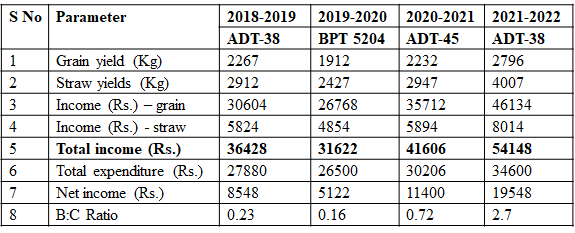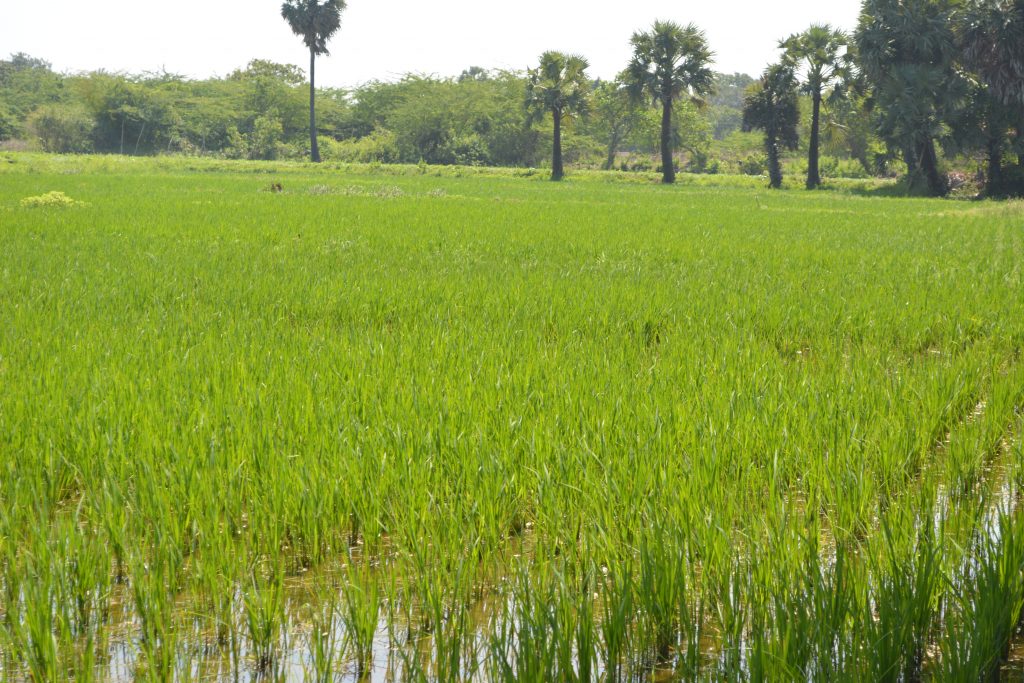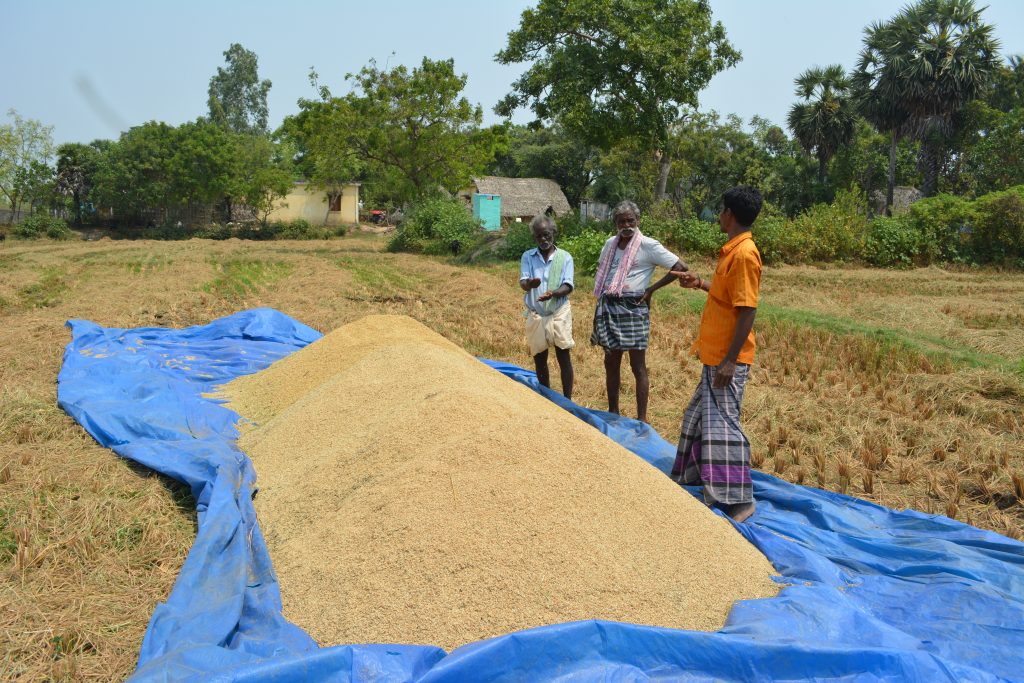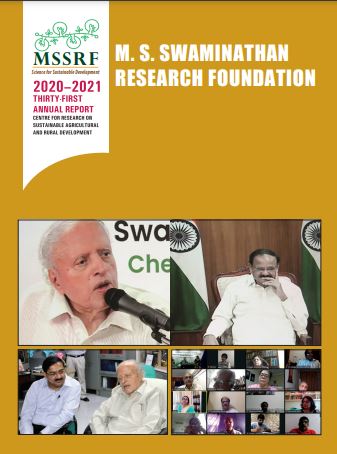Collective farming method works wonders for Tamil Nadu farmers
Success story on paddy cultivation by landless agriculture labourers in Thenpathi village, Mayiladuthurai District, TN
Authors: T.Selvarasu and Sangeetha Rajeesh
Context: Thenpathi has a small hamlet of landless daily-wage workers who reside within the Kaveripoompattinam panchayat limits of Mayiladuthurai district. The hamlet has 96 households and the inhabitants belong to the Schedule Caste. 90% of these villagers earn from agriculture and fishing practices, and their incomes vary depending on the season. During the samba months (September – January), the agriculture labour brings them approximately Rs. 20,000 per year. They also earn Rs. 20,500 every year through 100-day Mahatma Gandhi National Rural Employment Grantee (MGNREGA) scheme. If they work as labourers in rice fields, or during the cotton or pulses season during the months of February-May, they can earn up to Rs. 16,000. Thus, the village people engaged in agricultural work can earn a maximum of Rs. 48,000/- for an entire year.
Although this village records enough rain during the monsoons, the absence of reservoirs to store rain water force farmers to depend on water from Cauvery river for irrigation needs. Inadequate water supply from Cauvery hinders continuous agriculture. Repeated monsoon failures and natural disasters like Tsunami, cyclone and droughts have costed many villagers their livelihoods.
Intervention: MSSRF has long term association with the villagers of Thenpathi, and a discussion was organised with Traditional Panchayat Leaders (TPLs) – Mr. Ramalingam, Mr. Govindasamy, Mr. Palanivel, Mr. Raja, and Ms. Padmavathy. It was decided to initiate the concept of collective farming in agricultural land that was leased for paddy cultivation. Farming as a livelihood option for Thenpathi villagers came up only in 2018, until then they worked in the docks or as agricultural daily wage labourers. There was a collective decision to take up traditional agriculture practice with collective farming methods for a majority of landless labourers.
Output: Mr. Ramalingam took responsibility to explain group formation procedures and help villagers form a group with fish-farming members. Later, another group called B. R. Ambedkar Self-Help Group (SHG) was formed with ten members. The Collective is now cultivating 2.33 acres of leased land. Table 1 shows paddy crop parameters from 2018 to 2022, which indicates that adoption of collective farming for paddy cultivation by Thenpathi farmers.
Table 1: Paddy crops parameters 2018-2022
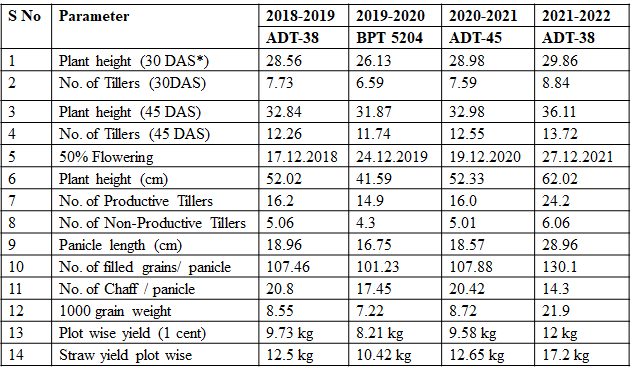
*DAS- Days After Sowing
Outcomes: The collective farming method adopted by the farmers was successful as it has opened up direct and indirect job opportunities for the agricultural labourers in the hamlet. The farmers now trust that agriculture is a profitable livelihood option because of the gains they received through collective farming, and having experienced a positive livelihood shift from daily wage earners to farmers. The villagers were able to manage their living expenses during the monsoon season, and when COVID-19 struck. Further, their food security is ensured because they consume the rice they produce. The collective farming practice encouraged self- confidence among the farmers as well. Table 2 presents the economic analysis for the same period (2018-22) and shows increasing incomes for the Thenpathi farmers.
Table 2: Economic analysis in paddy crops – 2018 to 2022
